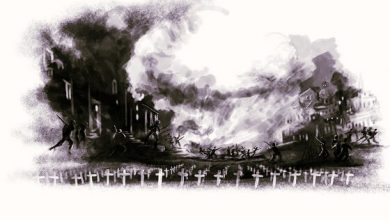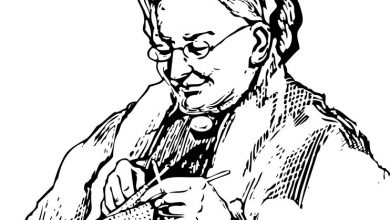The Tower | Summary
The Tower by Marghanita Lanski begins with a woman named Caroline who triumphantly drives alone. She is in Florence with her husband, Neville, for his business trip. She had picked up his travel handbook and curated a list of sites that he would not have seen, for she wanted to see them before he did. While he is busy in a meeting, she has managed to take the car out for a ‘cultural excursion.’ Now, she is almost done with everything she planned, and she knows it will take her 35 minutes to reach home. She decides to add a Tower called Niccolo di Ferramano onto her list- a teetering tower standing amongst the ruins of a destroyed village- as her final destination of the day’s little outing before it gets dark.
The name of the tower reminds her of a portrait she saw during a previous trip with Neville. During that trip, Neville had scoffed at her ‘ordinary’ itinerary, and instead taken her to more niche and lesser-known tourist spots, proud about being able to show off his knowledge and connections. They had seen a portrait of a girl named Giovanna di Ferramano, who had died at 18. Neville told Caroline that Giovanna had been married- there was a portrait of an unnamed man next to hers. Neville insists that it’s her husband, Niccolo di Ferramano. Neville says the last time he asked someone about it, it was clear that he should not have- the locals do not speak of him, for he was in a queer scandal, and they say Giovanna was either lost or damned. Neville suspects that it is because Niccolo dabbled in black magic. In Caroline’s discomfort, she decides to go back to the portrait at Giovanna instead, to which her husband mentions that Giovanna seems rather like Caroline herself.
At present, Caroline is at a crossroads- on her right is the tower atop the hill, and on the left is the road to Florence and back to Neville. Her mind tells her to take the left for her safety, which shocks her into getting out of the car and heading right. She reasons with herself that she may not be able to come this way again, and that she will only have a quick look. She begins climbing the narrow staircase to the top, in hopes of seeing a beautiful view. She counts every step as she goes up, ignoring the foreboding aura and her instinct telling her not to go any further. As it gets dark, she tells herself to turn around and go home, but she cannot bring herself to stop climbing after coming so far.
Caroline reaches the top on the four-hundred-and-seventieth step, disappointed by nothing more than a broken railing. However, she sees a wooden door and pushes it open, leading her to a circular stone platform. From here, she sees how high up she is, all alone- it evokes a swirl of fear in her as she realizes there is no other way down than the narrow, winding and unpredictable path she climbed, this time in the complete dark of the night. For a moment, she considers simply throwing herself off the tower, sobbing at the thought of her peril.
Finally, she tries to gather herself, still shivering in fear, and begins to climb carefully down the steps, counting as she goes. A voice tells her it would be easier to fall, but she ignores it and continues her descent. She can barely see, since it is so dark. A bat brushes against her face, her hands are bleeding because she refuses to let go of the wall. There is no safety net, and all that holds her is stone and brick. Each step seems closer to peril, and she shakes in terror at the fact that she has no safety, no protection- she cannot think, she is paralyzed by fear. The only thing that kept going was the tally in her mind, counting the steps. The story finishes eerily, with her counting her steps. When she first climbed the tower, there had only been four-hundred-and-seventy steps to the top. Yet as he continues to climb down, she goes beyond 470. She counts five hundred steps, and then five hundred and one, two, three…and here, the story ends.
The Tower | Analysis
The Tower by Marghanita Lanski is an eerie, powerful short story written in third-person narrative by an unnamed narrator. By using flashbacks, dialogues and giving a glimpse into the main character’s- Caroline’s- mind, the readers are treated as steady observers of a building peril. The author, Marghanita Lanski, is well-known for portraying her eloquence through simple vocabulary and straightforward structure. Further, the flow of the story gives it a haunting tone which draws the readers in. The themes of this story are control and dependency, fear, and the desire for freedom. Patriarchy is also a key factor, which is represented in a subtler way, through dialogues and interactions- and by doing so, it depicts how such patriarchal elements have woven itself into the unexplained norm of the society. Lanski employs symbolism, alliteration and imagery in this short story. She also uses foreshadowing and comparisons to create suspense.
Before the story begins, Lanski provides a brief context to the Tower- it is called “The Tower of Sacrifice” and contains 470 steps. The very mention of the number of steps acts as a hint of what is to come- one that is not noticed in the beginning. It is only after finishing the story that its importance in the context will dawn upon the reader. Once the main plot starts, we are able to see elements of Caroline’s desire for freedom immediately- “Triumphantly Caroline lifted her finger from the fine italic type.” The triumph indicates that she has overcome an opposition, or has done something she was unable to do in the past. In this case, it is to venture out alone and sightsee based on her own wishes. Further, she planned her day using “the guidebook Neville was always urging her to read,” which is the first sign of the husband’s dominance over the wife, and her wish to “contribute to his horde of culture” shows her longing for independence.
The theme of control is evident in Neville’s control over her life is mentioned quite a few times- for example, when she prepared an itinerary during their past Florence trip, and he brushed it off calling her an “ordinary tourist.” This sparked some insecurity in her, for she did not want to seem ordinary or uneducated. Neville constantly put her down, attempted to show off his own knowledge, and took her to places to exhibit his rich connections. She had no choice but to comply, because he would not accept anything else. Caroline had no freedom to choose her own plans, and even during their present Florence trip, she planned her day around his business meetings. She is completely dependent on him, and he clearly believes himself to be more learned and superior, which greatly irks her. She wants to show him her worth and free herself from his control.
The flashback she has to the portraits when she sees the name of the tower is foreshadowing the events to come. The portraits are described using imagery. They symbolize a warning- Giovanna died as an 18-year-old, apparently being “lost or damned”, while Niccolo is never spoken about because he dabbled in black magic. The fact that Caroline felt uncomfortable on seeing his picture- before knowing about the tower named after him- hints at the larger spell she will fall prey to. And when Neville says that Giovanna seems similar to Caroline, it is a foreshadowing that she will meet the same fate. This is where Lanski brings in a comparison between Giovanna and Caroline- they are both young women, and it may be assumed that Giovanna was bound into a marriage with a domineering husband. Giovanna’s death being named as “lost or dammed” gives no exact explanation as to how she died. Hence it may be believed that she ended up trapped in the tower the same way Caroline did.
The mention of black magic in relation to Niccolo may signify that he had cursed the tower. It is also important to note that the tower is called “The Tower of Sacrifice.” Readers may wonder why, and what it is used for, and it is never explained. But from snippets such as Caroline wanting to throw herself off the top of the tower to get down, it may be a sacrifice of life. The tower itself symbolizes the patriarchal nature of society, especially in marriage. Such a representation is also called a phallic symbol. The assumed black magic symbolizes the control men have over women- the casting of the dark spell is similar to their words and demands which may limit their wives from attaining true freedom.
When Caroline reaches a crossroads, she decides to go towards the tower rather than safely home. The moment of hesitation shocks her- she wonders why she considers going home before seeing the tower, when what she truly wants is to prove to herself and to Neville that she is capable. It is the strength of this desire for independence that spurs her on, despite the warning voices and uneasy feeling. The tower is surrounded by the barren land of a destroyed village. This is yet another foreshadowing- the lifelessness of the surrounding land symbolizes the most probable result of one who climbs the tower.
Each step she takes up the narrow, rickety stairs is a step to prove herself. We may liken the path up the tower to a social-gender ladder of sorts- she sees her journey up the tower as one up the ladder as well. Her perseverance is not only from having come so far on the climb, but having come so far in her determination to display her potential and equality to that of her husband’s. There are breaks in the railing which represent uncertainty and unpredictability. The way she ignores the voice in her head which urges her to turn around, warning her about her safety, shows that she is not willing to give up. At that point, turning around would be equivalent to accepting defeat against her husband. She is determined to reach the top- the top of the power is the peak of equality, proving that she is just as good, if not better, than her husband.
However, when she reaches the top, there is no beautiful view. Her hope to see a lovely view corresponds to her hope for a change and a brighter future. She wants to climb back down and tell her husband about her journey and have him realise her strengths, which she hopes might open up a new door to her freedom in their relationship. But alas, this isn’t to be :
“There was nothing ahead but a piece of broken railing barring her way and the sky drained now of all its colour still some twenty feet above her head.”
The broken railing represents a dead end, while the bleak sky represents hopelessness. No matter how much effort she puts into climbing to the top of the gender ladder, there is no light at the end of the tunnel. It highlights the low chances that Neville’s attitude will stop overpowering her. It also symbolizes the unfortunate unchanging nature of the society in terms of its treatment towards women.
It is then that she realizes there is no other way down the tower than the way she came up. Here, we see the theme of fear. She shakes and is paralyzed with terror, even considering throwing herself off the tower. Her descent is in the dark, more terrible and nerve-wracking than her climb, and her remorseless tally of steps stirs suspense and anxiety within the readers. When the count of stairs in her descent is more than that of her ascent, the readers become aware that Caroline has fallen to an unfortunate fate, as had been foreshadowed. It is unknown what happened to her- did she fall off and die? Is the tower truly cursed with black magic, leading her into a never-ending path of stairs? Did she get lost in the dark of the night? The eerie conclusion of a haunting count of the wrong number of stairs confirms to the readers Caroline’s hopeless end. The only alternative to her rebellion and demand for independence was her miserable destiny- “lost or damned” just like Giovanna.
The Tower | About the Author:
Marghanita Lanski was an English novelist. Her work often addressed class-barriers and gender in society, and she often wrote for feminist movements. It is interesting to note that Lanski’s father’s name is Neville, which is also the name of the main character’s husband in this story. Lanski died at age 72, due to health issues.



